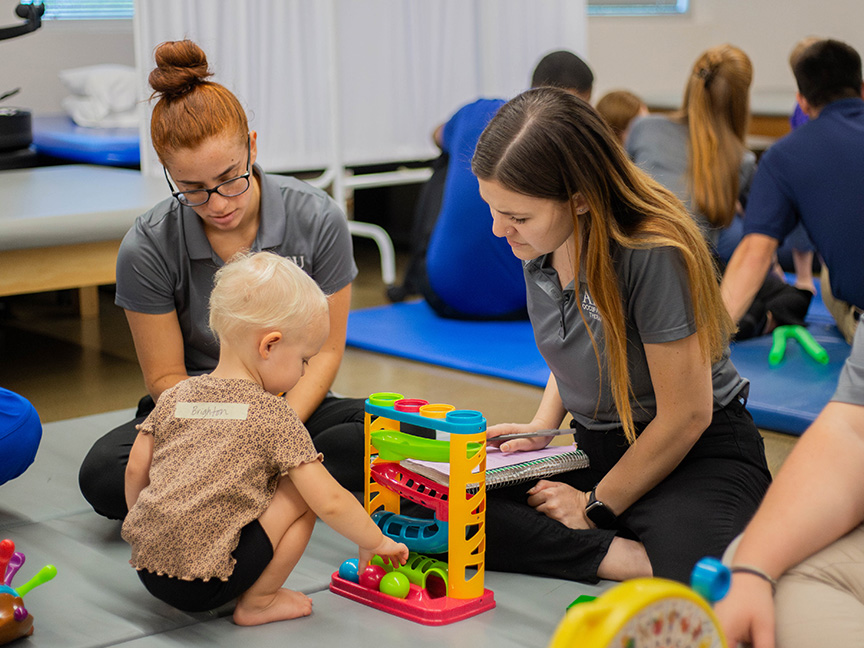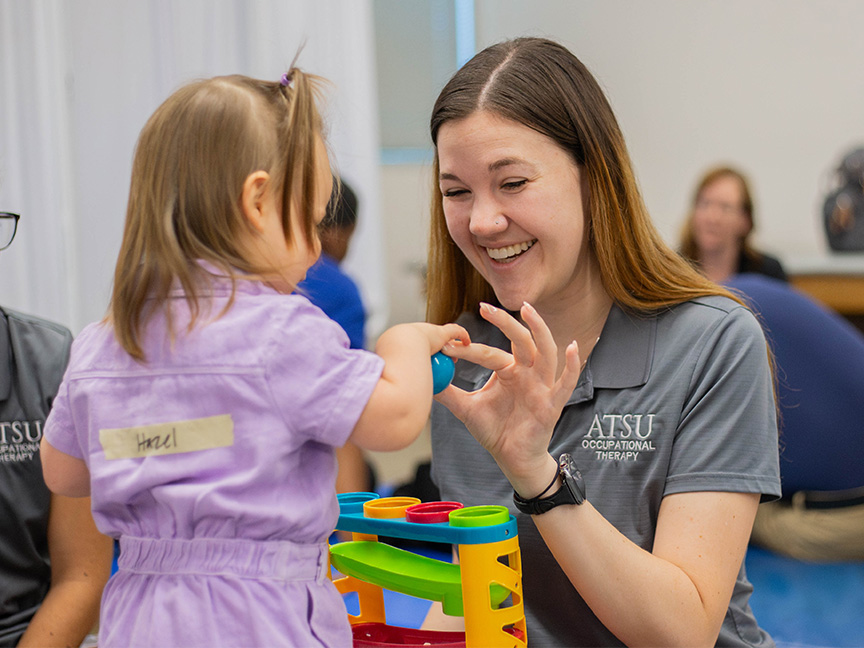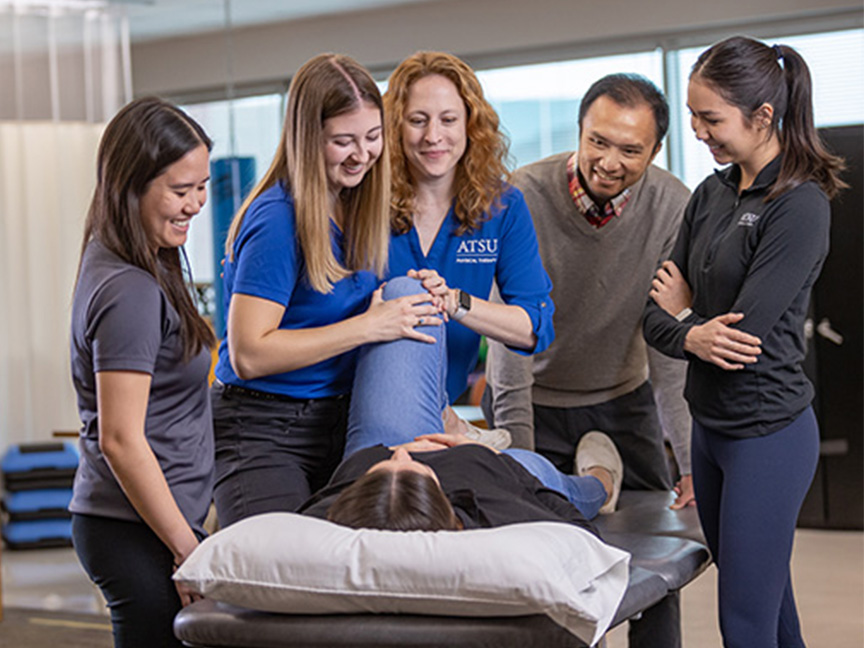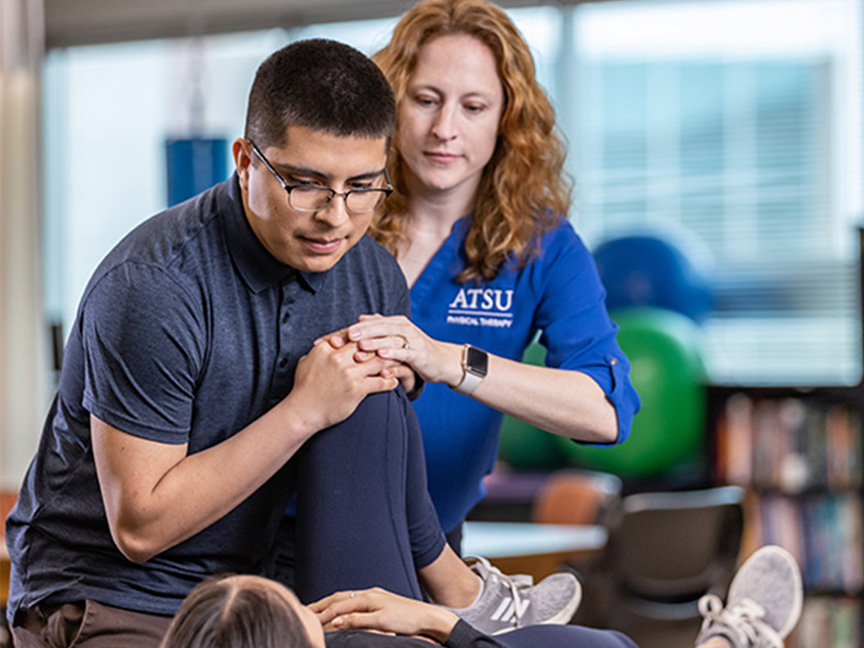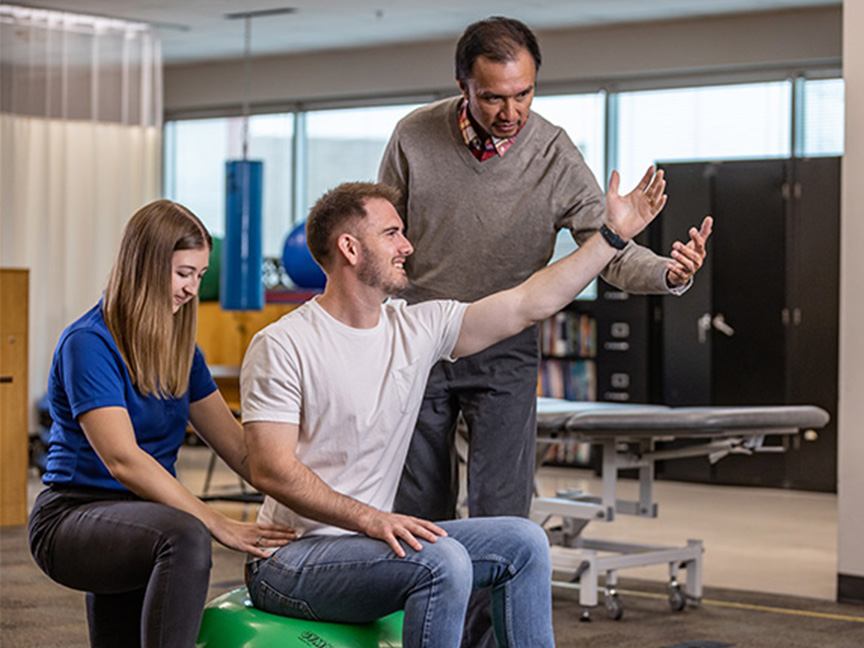Discover the OT and PT difference
Occupational therapy (OT) and physical therapy (PT) offer distinct approaches, and understanding these differences will help you choose the right path. If you’re considering a healthcare career, you may wonder: What’s the difference between OT and PT? Understanding the difference between OT and PT is essential for making an informed decision about your career. While both fields aim to improve quality of life, they focus on different aspects of recovery, rehabilitation, and wellness.
What is occupational therapy?
The primary goal of occupational therapy is to improve the ability of individuals to engage in meaningful activities, such as self-care, work, education, and leisure. OT practitioners work with individuals of all ages, using everyday life activities—known as “occupations”—to enhance health and participation. As the American Occupational Therapy Association (AOTA) explains, occupational therapy intervention uses life activities to promote health and your ability to engage in important tasks.
Occupational therapy services include:
- Activities of daily living (ADLs): bathing, dressing, and eating
- Returning to work, school, and leisure activities
- Adaptive equipment recommendations: e.g., shower chairs, dressing aids, modified kitchen tools and utensils, ergonomic equipment, etc.
- Caregiver and family training
- Memory, concentration, and cognitive support
- Falls prevention and home safety
Occupational vs. physical therapy: OT focuses on improving a person’s ability to perform daily tasks and the environment in which they complete these tasks. It can be provided in various settings, such as homes, schools, hospitals, and outpatient clinics, addressing the functional aspects of activities like self-care, work, and leisure. According to the AOTA, “Wherever daily activities occur, occupational therapy services can be provided.”
What is physical therapy?
Physical therapy focuses on improving movement, physical function, and recovery from injuries. According to the American Physical Therapy Association (APTA), physical therapy involves treatments provided by licensed physical therapists to help individuals recover from injury, prevent further injury, and improve movement and physical function. PT is especially important for patients dealing with physical impairments due to injury, illness, or chronic disease.
Physical therapy can involve:
- Therapeutic exercises to improve movement and strength
- Pain management techniques
- Modalities like heat or cold therapy
- Patient education and rehabilitation techniques
Physical therapy vs. occupational therapy: PT is focused on improving mobility, strength, and preventing movement loss, often using physical exercises, manual therapy, and rehabilitation techniques to treat patients.
The key difference between OT and PT
OT and PT are both client-centered fields, but they approach recovery and rehabilitation from different angles. The difference between PT and OT can be summarized as follows:
- OT practitioners focus on helping individuals perform daily tasks (e.g., self-care, work, leisure) and adapting the environment to promote independent living.
- PT practitioners focus on improving physical function, mobility, and strength through exercises, rehabilitation, and manual therapy.
Though there is overlap, the distinction between occupational therapy vs. physical therapy lies in their approach to recovery and rehabilitation.
How to become an OT vs. PT?
Do you like to help people move better or improve their daily lives? Becoming an OT or a PT could be the right path for you. You might be curious about how to become an OT or a PT. Here’s the breakdown.
How to become an OT: If you’re interested in becoming an occupational therapist (OT), it typically takes 6-7 years to complete the required undergraduate education and a graduate program, either a Doctor of Occupational Therapy (OTD) or a Master of Science in Occupational Therapy (MSOT). ATSU offers both programs to prepare students to deliver client-centered care in various settings. After graduation, you’ll need to pass the NBCOT exam and obtain state licensure to practice as an OT.
How to become a PT: On the other hand, becoming a physical therapist also requires about 7 years of education—completing undergraduate studies followed by a Doctor of Physical Therapy (DPT) program. ATSU also offers a DPT program that prepares students to become skilled PTs. After a DPT, PTs must then pass a licensing exam and meet state-specific requirements before beginning their practice.
While both OT vs. PT fields require significant education and clinical training, each has its own approach to health and recovery, focusing on different aspects of rehabilitation and patient care.
Ready to start your OT or PT journey?
Whether you're deciding between occupational therapy vs. physical therapy or already have a clear path in mind, understanding the difference between OT and PT is crucial. While both fields focus on improving well-being, OT helps individuals engage in meaningful daily activities, while PT concentrates on restoring movement, strength, and recovery from injuries. The two fields often collaborate in multidisciplinary teams but have distinct scopes.
ATSU’s DPT, OTD, and MSOT programs prepare students to become skilled, client-centered healthcare providers, equipping them with the knowledge needed to take their licensure exams. All three programs include clinical experiences, allowing students to observe how OT and PT differ and work together to improve patient care. All ATSU programs prioritize hands-on learning, health equity, and leadership to ensure graduates are equipped to meet the diverse needs of the communities they serve.

